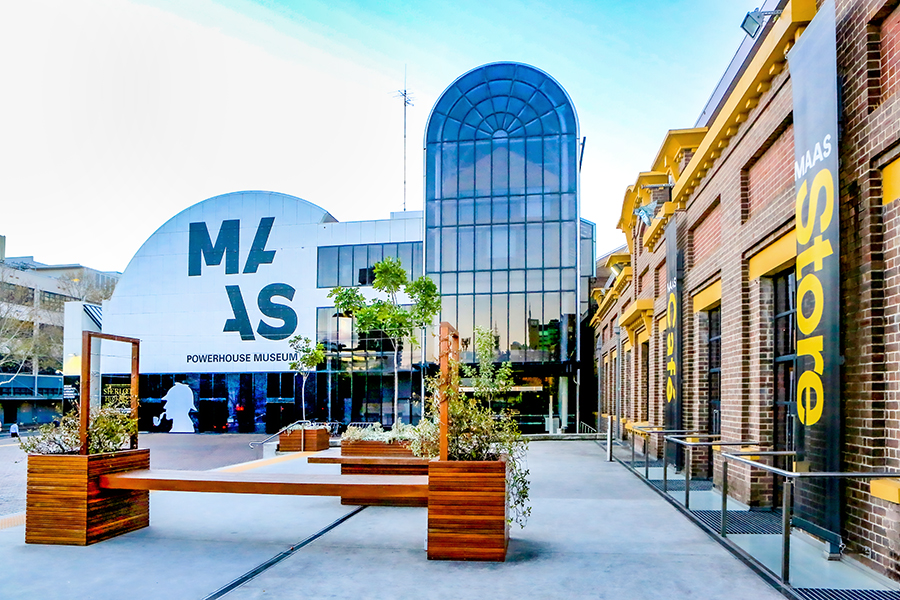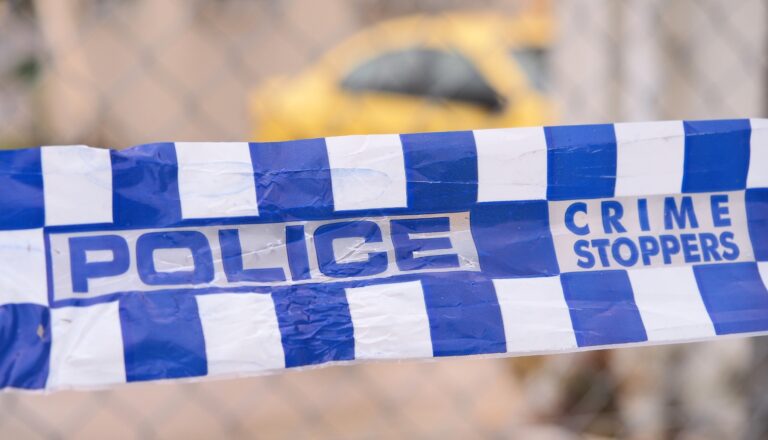
Powerhouse in peril

by ALEC SMART
The NSW Govt has released costings that underpin their motive to close the Powerhouse Museum, prior to its demolition and transfer of some of its exhibits to a smaller museum in Parramatta.
However, the documents, obtained under Parliamentary Order by a cross-bench of Upper House MPs, reveal NSW Govt’s plans for the ‘relocation’ of the Powerhouse Museum in Ultimo – currently estimated at $1.179 billion – are fraught with technical difficulties.
They confirm suspicions long raised by opponents of the museum’s move that relocating large, fragile exhibits to the new, as yet unbuilt riverside premises (currently occupied by a multi-storey car park in Parramatta) is risky.
These large exhibits range from: a horse-drawn bus; several airplanes including a Catalina flying boat and two 1930s biplanes, a Cirrus Moth and a Genairco (one of 3 left in the world); a helicopter; a tram; a Boulton & Watt steam engine that powered Whitbread Brewery in London for 102 years from 1785; ‘Locomotive No.1’, NSW first passenger train built in 1854; and an 1887 copy of the Strasbourg Astronomical Clock.
On 13 May 2020, Robert Borsak MLC, Chair of the cross-party Select Committee investigating the management of Powerhouse Museum, demanded the NSW Govt release copies of any business case documents and cost benefit analyses created since 12 April 2018 that might justify the museum’s move.
Under Standing Order 52, the Select Committee, established on 27 Feb 2020, also called for Ms Berejiklian to supply project capital and costs for the planned new Parramatta building, plus cost estimates of the transfer and storage of large objects from Ultimo.
The Select Committee is also examining disparities in NSW Govt funding for city and regional galleries and museums.
Closure imminent
The Powerhouse Museum’s heritage core in Ultimo will be closed permanently on 30 June 2020. However, the Parramatta replacement, which critics have derided because the Moreau Kusunoki & Genton winning design resembles two white plastic milk crates, will unlikely be open to the public before 2025.
The NSW Govt insists it is still firmly committed to demolishing the Powerhouse Museum in Ultimo, which occupies a former tram depot and electric generator that once powered Sydney’s historic tram network.
Their contentious plan ultimately leads to selling the historic site to developers for high-rise apartments. And yet the redesign of the historic powerhouse for the museum won NSW Govt architect Lionel Glendenning the 1988 Sir John Sulman Medal architectural prize for excellence in public and commercial buildings, Australia’s most prestigious architectural award.
Mr Borsak believes “there is no doubt that this is about a government grab for inner city real estate.”
In Sept 2017 Mr Borsak told City Hub, “For $1.5 billion [the estimated cost of the museum’s relocation, revised up from the projected $1.179 billion], Parramatta could have a brand new science and technology centre on the scale of Questacon in Canberra, rather than an expensive recycling operation for something already in Sydney.”
Only a selection of the Powerhouse Museum’s estimated collection of 500,000 artefacts will fit in the significantly smaller new purpose-built museum in Parramatta. A large proportion of them will go into storage or be loaned to other, as yet unspecified, museums.
Unfeasible to move large exhibits
A feasibility study commissioned in March 2020 found at least 15 of the Powerhouse Museum’s largest objects were incapable of fitting in the new building’s goods lift to be transported up to their respective display spaces.
Exhibits cannot be stored on the ground floor of the new building because the site is a floodplain and prone to surging stormwaters from the adjacent Parramatta River.
Among the most brittle exhibits, Locomotive No.1, a 26 tonne, 4.6 metre-long engine that was the first locomotive built in Britain by the world’s first railway engine manufacturer, Robert Stevenson & Co., is believed to be the only one preserved from that era.
Locomotive No.1 arrived in Sydney by ship on 13 January 1855 with three others to haul passenger and freight carriages around NSW and ended its service on 15 May 1877 having travelled 250,468 km. Since its retirement it has been dismantled, preserved and relocated several times, including moving from the Agricultural Hall in the Domain to the Museum of Applied Arts and Sciences’ original site in Harris St, Ultimo, then finally the former tram powerhouse building in Ultimo that was repurposed as the Powerhouse Museum in 1988.
Labor’s treasury spokesperson, Walt Secord, said “Documents show that it will cost almost a half-million dollars to simply lift the locomotive into the new Powerhouse. That is just crazy and shows that no due diligence was taken when they promised to relocate the locomotive.”
Due to the brittleness of the 170-year-old ironwork, opponents of the move are anxious that it won’t survive the transfer to Parramatta without some breakage of the irreplaceable pieces.
Arup Australia, structural designers and engineers that were consulted by the NSW Govt to investigate options to move heavy objects from Ultimo Powerhouse to Parramatta, advised against the primary option. This involves modifying the lattice façade of the ‘milk crate’ exterior to allow objects to be lifted into the new building via a telescopic crane from Phillip Street outside.
Chief among the critics of the relocation is world-renowned museum expert Dr. Lindsay Sharp, the founding director of the Powerhouse Museum, who oversaw the original move of the Technological Museum to its current site.
Dr. Sharp, who has consulted on the construction of major museums around the world, questions the entire process of relocating the Powerhouse to Parramatta, from the secrecy of its funding to the vulnerability of the new site to flooding, to the practical logistics of transferring the exhibits.
“The Powerhouse Museum buildings are wonderfully robust and they can be upgraded, as they have been continuously,” he told City Hub in Sept 2017. “It’s a complete furphy that the Powerhouse Museum is not fit for purpose, can’t be upgraded, hasn’t been upgraded and they need to move it.
“It’s a very complicated issue moving the large objects, and indeed any kind of object that’s delicate and sensitive. People think because objects are large they are inherently robust and strong. In the case of the Bolton Watt steam engine, which is the Mona Lisa of the Industrial Revolution, it’s old cast iron and it’s very fragile. Taking it to pieces is very risky. Transporting it is very risky. If it’s dropped or hit inadvertently by something hard in the wrong spot it could shatter. It would be one of the great heritage demolition tragedies in the world.
“If they do get the old steam engines out, they have to be set 20-30 metres above the current river level to take into account potential flooding. How do you put a locomotive 30 metres up a building? That engineering would be heroic and very costly.”
Withholding information
During the last Legislative Council Inquiry into the Powerhouse Museum move, which ran from 2016-2018 and was also chaired by Robert Borsak, the NSW Govt withheld documents for over two months that explained their business plan, including negotiations and costings surrounding their decision.
When, in June 2018, the business plan costings were eventually handed over after an order from the NSW Parliament Upper House, the documents were significantly redacted.
Until those business case documents were released, the public were not aware that the heritage-listed Willow Grove (next door to the old car park annexed for the museum’s construction), and historic St George’s Terrace, a row of seven two-storey Victorian terrace houses built in 1881, were also earmarked for demolition by the NSW Govt.
Willow Grove House, a 150-year-old Victorian Italianate two-storey villa that was originally a private villa, and later served as a maternity hospital called Estella, was purchased by Parramatta council in 2015 as part of their plans for an open foreshore reserve and entertainment precinct.
The Powerhouse Museum Alliance, a broad coalition of conservationists and professionals opposed to the relocation of exhibits and the Ultimo site’s destruction and conversion to high-rise apartments, issued a statement in June 2020:
”The Berejiklian Government has the Powerhouse Museum on death row…. Australia’s best exhibitions of planes, trains, working steam engines, science and applied arts – our history – will be dismantled. These collections will never be seen together again. The Museum’s site will be sold to developers.”
In the meantime, heritage orders may save both the current museum site from high rise apartments and the historic properties adjacent to the proposed museum site.
NSW Dept Planning, Industry and Environment has already applied on 24 Feb 2020 for the Engine House and Turbine Hall, Second Boiler House, Office Building and Switch Hall in Ultimo to be listed and preserved under the State Heritage Inventory.
Parramatta City Council may also seek an interim heritage order on the two historic sites scheduled for demolition at Parramatta, Willow Grove House and St George’s Terrace. This will effectively halt any NSW Govt attempts to fast-track the demolition process while state heritage inspectors consider their historical worthiness.









